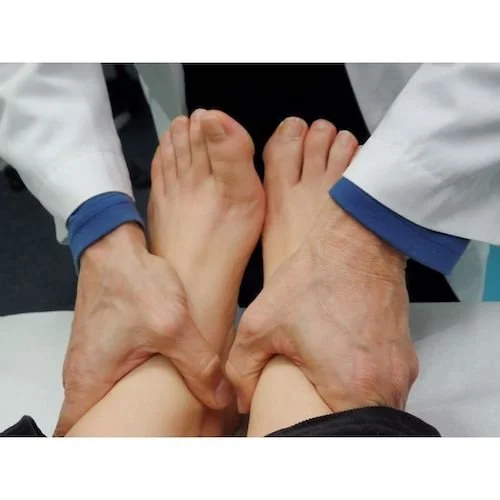Poor blood circulation in the feet and legs is often caused by peripheral artery disease (PAD), which is usually the result of a build up of plaque in the arteries.
Read MorePicking the right shoe size is not rocket science, but there are a few things to remember when selecting your next pair.
Read MoreRunning may seem like a simple thing to do, but in reality it is a complex movement that puts stress on the ligaments, bones, and joints of the body. Because of this, selecting the correct running shoe is important for increasing performance and avoiding risk of injury.
Read MoreToenail fungus is a frustrating and embarrassing problem for many people. It can be persistent and hard to get rid of. Thankfully, there are a number of options for treatment available.
Read MoreCommon systemic diseases that affect the overall health of the feet, and the patient’s ability to walk comfortably, include gout, diabetes mellitus, neurological disorders, and arthritis.
Read MoreThere is no sport that completely prevents the foot or ankle from becoming injured. In fact, even simple activities such as darts and pool might cause injuries to the foot.
Read MoreCracked heels are a problem for those who are athletic, who may walk a lot, and who have dry skin especially. Those who use medication that dry the skin, swim a lot, wear certain types of shoes, and who are diabetic may have trouble with cracked heels.
Read MoreThe Achilles tendon is the strongest tendon in the human body. Its purpose is to connect the lower leg muscles and calf to the heel of the foot.
Read MoreAthlete’s foot is an extremely contagious infection caused by a fungus that results in itching, burning, dry, and flaking feet.
Read MoreA blister on the foot is basically a small pocket that is fluid filled. This pocket typically forms on the upper layers of skin, because those layers are so thin.
Read More










